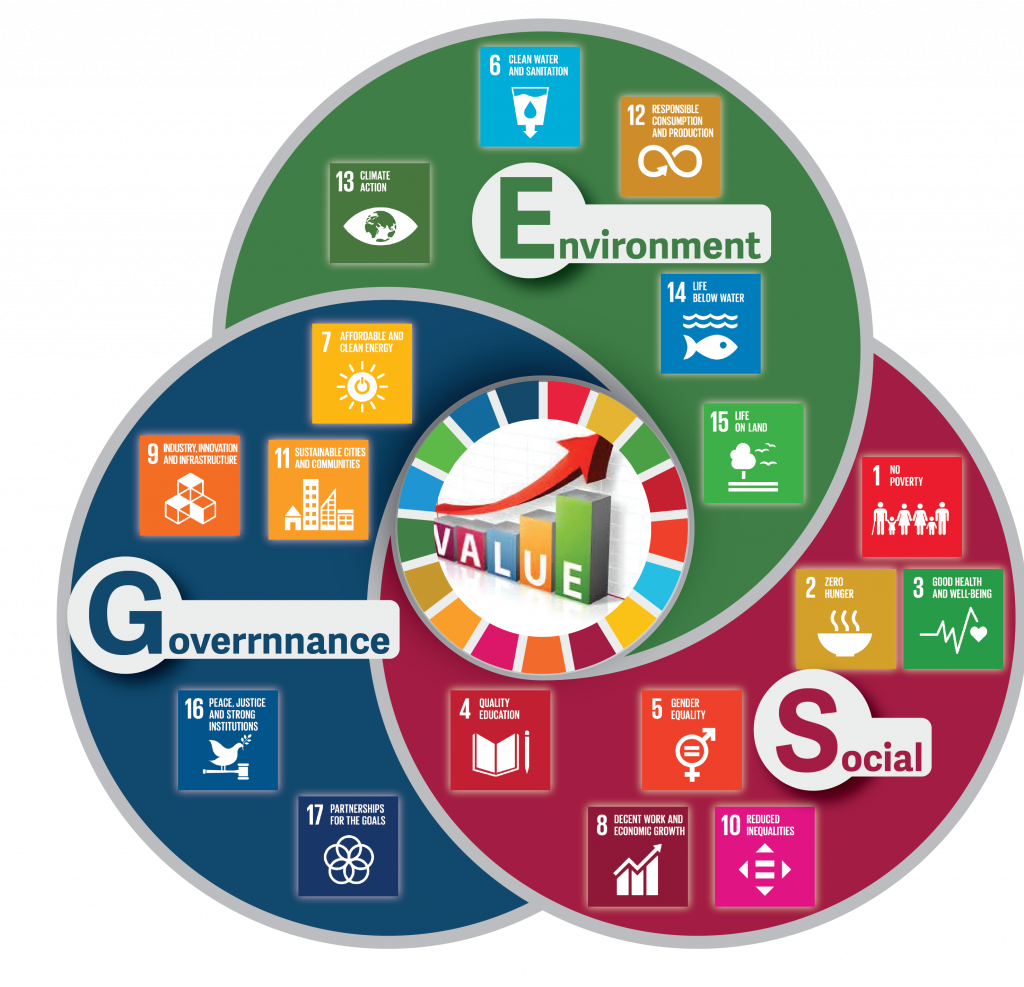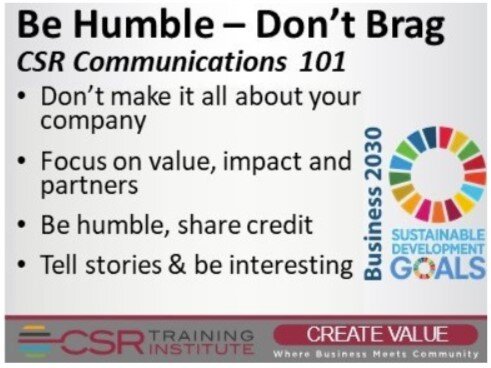Sustainability Communications is not all about you. Not if you want to engage and be effective. Humility and strategy are key.
Your company isn’t perfect, it didn’t accomplish great things all by itself, and it sure didn’t engage in sustainability because of an altruistic motive. So don’t report it that way.
Sustainability communications can create business value and foster improved social impacts. But not when they are based on fanciful corporate delusion, and shouted from the hilltops to impress rather than inform.
Let’s be honest, when an organization frames a story so they become the hero it is rarely true, and it doesn’t work – unless you have some narcissistic internal audience you are catering to. If that’s your company culture, you have my sympathies. Be humble, be vulnerable, be engaging.
Effective, value-creating sustainability communications will
- Reach and resonate with your stakeholders;
- Facilitate stakeholder alignment and business value;
- Positively support your brand and image
- Support financing
- Enhance recruiting, retention and corporate culture
- Improve regulatory and government relationships
Here are six touchpoints to help you achieve these objectives:
- Focus on value and impact. What value was created? For who? What is the impact? Why is it important? – Don’t forget to include value for your business and why that is important. Your company isn’t a selfless, altruistic angel. Trying to portray it as one costs you credibility.
- Share credit. Generously. Be humble. Acknowledge partners and collaborators. Talk about their role. Share their stories. It will add credibility and your stakeholders will be much more likely to read and share your communication. Make it all about you and your wonderful and noble efforts and nobody will buy what you’re trying to sell. In fact, you are more likely to destroy reputational capital than to enhance it.
- Tell stories. Feature people. Keep it interesting. Facts are OK, but facts alone are boring. Be engaging.
- Use pictures and images. And limit how many of them include your logo and branding. You want to reach and engage your audience. Sustainability communications is not a direct branding exercise (but, done well, has great long-term brand impact)
- Acknowledge shortcomings. You’re not perfect and neither is your work. Discuss lessons learnt and areas where you will improve in the future. Projecting perfection isn’t effective if you want your communications to create value for your company.
- Use the SDG or ESG Framework. The 17 Sustainable Development Goals (SDGS) were adopted unanimously by the United Nations.
 They form the development framework for all countries, most major organizations and are very likely to be important to many of your stakeholders. ESGs have become a major consideration for finance, and other key stakeholders. By integrating your impacts and stories into these frameworks they will likely resonate well and facilitate further engagement and collaboration.
They form the development framework for all countries, most major organizations and are very likely to be important to many of your stakeholders. ESGs have become a major consideration for finance, and other key stakeholders. By integrating your impacts and stories into these frameworks they will likely resonate well and facilitate further engagement and collaboration.
Follow these steps. The story of the role that your firm played will not only tell itself, it will be told and retold by others.
Done properly, sustainability communications are valuable for your business and brand. They facilitate stakeholder engagement, enhance access to financing, improve employee recruiting and retention, support marketing and business development, improve government and regulatory relationships.
Done poorly, they simply make your business look self-centered and narcissistic.
Sustainability communications require significant inputs of time, money and other resources. Don’t waste that investment.
Remember, humility is key

If you have any questions about this article, or would like to know more about how we can help your organization, please send me an email. Wayne@CSRtraininginstitute.com

